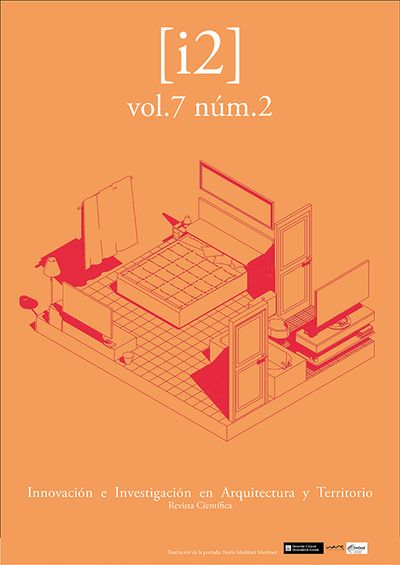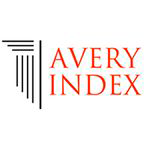¿Es posible aplicar el crowdsourcing a la arquitectura de media escala? Estado del arte y nuevas vías a explorar
DOI:
https://doi.org/10.14198/i2.2019.2.06Palabras clave:
Crowdsourcing, Colaboración masiva, Proyecto Arquitectónico, ProcesoResumen
El objetivo de este artículo es evaluar el estado del arte de la aplicación del crowdsourcing a la arquitectura de mediana escala y detectar posibles nuevos modelos de aplicaciones. Para ello, primero, se establecerá un marco teórico sobre el crowdsourcing donde se tratará cuáles fueron los fenómenos de los que nació (sus raíces) y la definición del término. Estos recursos teóricos servirán para detectar y evaluar los casos de aplicación de crowdsourcing a la arquitectura.
A continuación, se tratará el estado actual de aplicación del crowdsourcing a la arquitectura. El crowdsourcing ha sido ampliamente utilizado para proyectos de gran escala (urbana y territorial) como medio para realizar cartografías colaborativas de todo tipo. Sin embargo, en la escala mediana, este modelo de colaboración masiva apenas se ha aplicado. Los únicos casos de aplicación del crowdsourcing al proyecto de arquitectura, implementados públicamente, han sido Arcbazar y Pillar. Ambas son plataformas de concursos donde se implementan procesos de crowdsourcing selectivo.
Para encontrar nuevos modelos alternativos, se buscarán, casos de arquitectura que se encuentran vinculados a las raíces el crowdsourcing. Tras realizar una lista de casos, estos se evaluarán según la definición del término de Estellés y González para determinar su cercanía al crowdsourcing. Los casos más cercanos al crowdsourcing se analizarán para estudiar las posibles nuevas vías de aplicación.
Finalmente se concluye con la detección de dos posibles modelos alternativos al modelo de concurso: el modelo para la creación de colecciones y el modelo para el desarrollo de sistemas.
Citas
ALTUNA CHARTERINA, G., & RIBOT, A. . "Crowdsourcing y cognición colectiva del medio urbano contemporáneo a través de las infraestructuras digitales. pro-puesta de una taxonomía abierta". En: Actas III Congreso Internacional BIA 2018, (Bilbao 20-22 de junio 2018), 2018, P. 24-26.
ARIS, H. Current state of crowdsourcing taxonomy research: A systematic review. En Proceedings of the 6th International Conference. 2017. p. 260 As, I., & Angelico, M. (2012). Crowdsourcing Architecture: A Disruptive Model in Architectural Practice.
AWAN, N; SCHNEIDER, T; TILL, J. Spatial agency: other ways of doing architecture. Routledge, 2013. https://doi.org/10.4324/9781315881249
BERGDOLL, B, et al. Home delivery: fabricating the modern dwelling. The Museum of Modern Art, 2008
BETSKY, A., 2015. The Potentials and Pitfalls of Crowdsourced Architecture. The journal of the American Institute of Architects, Disponible en internet:< https://www.architectmagazine.com/design/culture/the-potentials-and-pitfalls-of-crowdsourced-architecture_o>
BRABHAM, Daren C. Crowdsourcing. Mit Press, 2013. https://doi.org/10.7551/mitpress/9693.001.0001
BRUSSEE, R., ROVERS, M., VAN VLIET, H., SWART, D. y HEKMAN, E., 2013. Crowdsourcing. Classification, costs, benefits, and usage. Conference papers CARPE 2013. S.l.: s.n.,
CORNEY, J.R., TORRES-SÁNCHEZ, C., JAGADEESAN, A.P. y REGLI, W.C., 2009. Outsourcing labour to the cloud. International Journal of Innovation and Sustainable Development, vol. 4, no. 4, pp. 294-313. https://doi.org/10.1504/IJISD.2009.033083
CROSBITE, M., 2014. Crowdsourcing Design: The End of Architecture, or a New Be-ginning? [en línea]. Disponible en: http://www.archnewsnow.com/features/Feature448.htm.
ESTELLÉS-AROLAS, E. y GONZÁLEZ-LADRÓN-DE-GUEVARA, F., 2012. To-wards an integrated crowdsourcing definition. Journal of Information science, vol. 38, no. 2, pp. 189-200. https://doi.org/10.1177/0165551512437638
FULCHER, M., 2011. Architecture crowd-sourcing website criticised. [en línea]. Dis-ponible en: https://www.architectsjournal.co.uk/home/architecture-crowd-sourcing-website-criticised/8620481.article.
GADIRAJU, U., KAWASE, R. y DIETZE, S., 2014. A taxonomy of microtasks on the web. Proceedings of the 25th ACM conference on Hypertext and social media. S.l.: ACM, pp. 218-223. https://doi.org/10.1145/2631775.2631819
HOWE, J., 2006a. Crowdsourcing: A Definition. crowdsourcing [en línea]. Disponible en: http://crowdsourcing.typepad.com/cs/2006/06/crowdsourcing_a.html.
HOWE, J., 2006b. The rise of crowdsourcing. Wired magazine, vol. 14, no. 6, pp. 1-4.
HOWE, J., 2008. Crowdsourcing: How the power of the crowd is driving the future of business. S.l.: Random House.
KESLACY, E., 2018. Arcbazar and the Ethics of Crowdsourcing Architecture. Thresh-olds, pp. 300-317. https://doi.org/10.1162/thld_a_00043
KIERAN, S. y TIMBERLAKE, J., 2003. Refabricating architecture. S.l.: McGraw-Hill.
KOLAREVIC, B. y DUARTE, J.P., 2018. Mass Customization and Design Democrati-zation. S.l.: Routledge. https://doi.org/10.4324/9781351117869
LEADBEATER, C. y MILLER, P., 2004. The Pro-Am revolution: How enthusiasts are changing our society and economy. S.l.: Demos.
NAGORE, I., 2011. Open Building. Arabiranta Shore. [en línea]. Disponible en: http://www.laciudadviva.org/blogs/?p=10842.
RATTI, C. y CLAUDEL, M., 2015. Open Source Architecture. S.l.: s.n.
SCHENK, E. y GUITTARD, C., 2011. Towards a characterization of crowdsourcing practices. Journal of Innovation Economics & Management, no. 1, pp. 93-107.https://doi.org/10.3917/jie.007.0093
SCHMIDT, F., 2017. Crowd Design: From Tools for Empowerment to Platform Capi-talism. S.l.: s.n. ISBN 978-3-0356-1068-0.
https://doi.org/10.1515/9783035610673
STAGGS, B., 2014. Architects miffed at website that offers low-cost bids. [en línea]. Disponible en: https://www.ocregister.com/2014/02/22/architects-miffed-at-website-that-offers-low-cost-bids/.
TOFFLER, A., 1980. The third wave. S.l.: Bantam books New York.
VON HIPPEL, E., 2004. Usuarios y suministradores como fuentes de innovación. S.l.: s.n.
Descargas
Estadísticas
Publicado
Cómo citar
Número
Sección
Licencia
Derechos de autor 2019 Gaizka Altuna Charterina, Almudena Ribot Manzano

Esta obra está bajo una licencia internacional Creative Commons Atribución 4.0.







